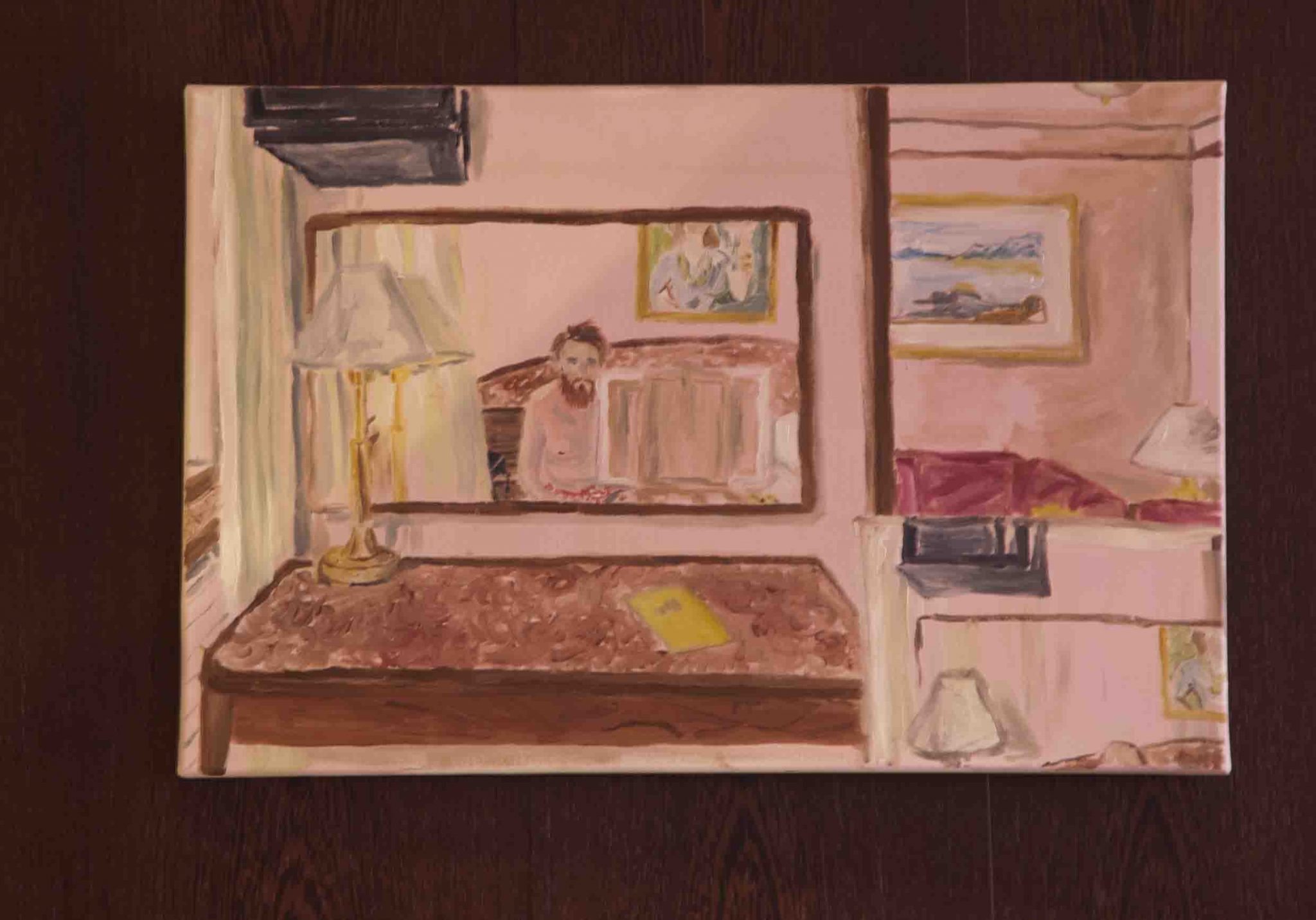It’s a bit disconcerting to come out of your hotel room and discover a queue of people waiting outside a neighbouring room. The establishment seemed respectable enough when I checked in. In reality there was nothing tawdry going on: these were punters waiting to enter, one-by-one, Hans Rosenström’s sound installation, one of a number of works and performances that took place around Reykjavik as part of the city’s biannual Sequences ‘Real Time Art Festival’. Saturday night was the penultimate one of the event, curated by Markús Þór Andrésson, and the evening centred around Hótel Holt, a decaying old dame of a place; all oak paneling and rich soft carpets.
Room 206 was almost identical to my own, except dangling above the desk chair, which had been moved out to the middle to room to face the bedroom mirror, was a set of headphones. As one placed these on the lights dimmed by themselves and a spoken-word narration started. It wasn’t what was said that was so unsettling however. (It was in Icelandic, though the translated script, which I read afterwards, reminded me of the oddity of a hotel room, part public space, part private: ‘A constant movement of people, coming and going. Unpacking and packing. Dressing. Undressing. Showering. Sleeping. Dreaming.’) Rather, it was the uncannily spatially accurate surround sound that made it seem that the speaker had come from the bathroom and was walking behind my chair. So much so that I – and others I spoke to after – reported entirely psychosomatic feelings of having our hair or shoulder touched. The work played on hauntological themes – that a building be inhabited with the echoes of previous events – and the slipperiness of defining memory and emotion.
It was a relief then to get down to the general bonhomie of the bar and lobby. The former was packed with regulars from Reykjavik’s inordinately large (given the country’s population is only about 320,000) art scene, gathered round the fireplace as a band led the crowd in a sing-song of old Icelandic communist songs. I can’t exactly tell you how this fitted in with the festival’s wider preoccupation with the everyday, but it was a lovely, rather heartwarming scene nonetheless.
Out in the lobby a treasure hunt was being organised but rather than get roped in, I headed next door to the library to see artist Magnús Logi Kristinsson stuck in a box. Kristinsson’s works tend to be durational tests of physical stamina, putting his body in uncomfortable positions for long periods of time. Here the artist’s suited and booted leg stuck out from an appropriately sized hole in the front of his white-painted, wooden container; an arm from another. It had a cruel absurdity to it: objectifying the body and challenging the audience’s generally mirthful reaction.
A few glasses of wine and a performance by Úlfur Grönvold – in which the artist took his top off, taped a phone directory to his feet, and proceeded to bounce back and forth drawing in marker pen on two sheets of taped-up paper – later (and before I was tempted to eviscerate the hotel’s vast floor-to-ceiling whiskey cabinet, and my bank account by measure), it was back up the creaking lift, this time to room 413. Here Rebekka Erin Moran had a film-based installation, in which she projected a blank 16mm film through a circular prism of varying coloured Perspex. The end result was a light image that looked very much like the standard ‘beachball’ wait curser on an Apple Mac. It was a simple enough premise – a nod to the frustration of waiting – nicely complicated by the use of old analogue technology. This room had previously been used in the production of another commission. A short while before the start of the festival, Ragnar Kjartansson had checked himself in to the suite for a one-night stay. During that period he painted a series of self-portraits using the hotel mirrors. These were hung in the lobby aside the hotel’s permanent collection of older, often naïve, paintings, which include work by the artist’s grandfather, who went by the same name. A self-reflective series, they were simultaneously melancholic and uplifting in their mediation of time passing, aging and the process of older generations giving over to younger ones.
A review of the full programme of exhibitions, installations and performances that formed Sequences VI will appear in the June issue of ArtReview magazine.
